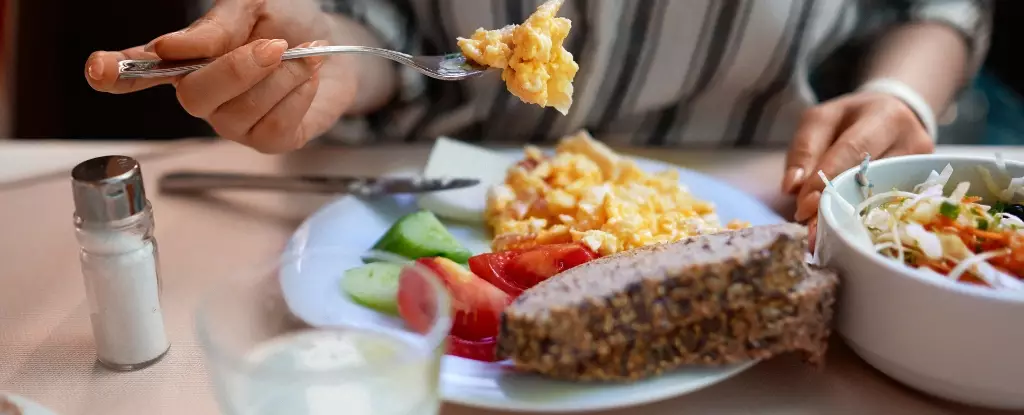In an era marked by a significant uptick in the use of pharmaceutical aids for weight loss, one might expect that these medications are universally embraced. Yet, surprisingly, a substantial number of people are expressing a preference for achieving weight loss through non-medical routes. This trend speaks volumes about the growing desire for holistic and sustainable health solutions, reflecting a deeper understanding of the intricate relationship between diet, hormones, and overall well-being.
Natural approaches to weight loss not only resonate with those wary of potential side effects associated with medications but also champion a philosophy of nourishing the body with the right foods. This article delves into how specific dietary habits and nutrients can stimulate the same hormonal pathways activated by popular medications like semaglutide, without the use of pills.
The Science Behind Satiety Hormones
At the heart of satiety and weight regulation lies GLP-1 (glucagon-like peptide 1), a hormone crucial for controlling appetite and digestion. Medications like Ozempic and Wegovy capitalize on GLP-1’s benefits by enhancing its levels, leading to a prolonged feeling of fullness that discourages overeating. However, one does not necessarily need to rely on medications to achieve similar effects. Research has revealed that various dietary strategies and nutrients can effectively stimulate GLP-1 production naturally.
A notable finding is that increased fiber intake—commonly found in legumes, vegetables, whole grains, nuts, and seeds—significantly boosts GLP-1 levels. The fermentation of fiber in the gut produces short-chain fatty acids that, in turn, stimulate GLP-1 release. The role of fiber extends beyond mere appetite suppression; it is arguably one of the strongest natural allies in promoting healthy weight loss, enabling individuals to shed pounds even when calorie counting is not part of the equation.
The Power of Healthy Fats
Beyond fiber, the inclusion of monounsaturated fats in the diet can elevate GLP-1 levels. These fats, prevalent in olive oil and avocados, have demonstrated compelling effects on satiety hormones. For instance, research indicated that consuming olive oil with bread significantly outperformed the use of butter in increasing GLP-1. Similarly, studies have shown that pairing avocado with meals enhances GLP-1 secretion. This suggests that shifting the focus from saturated fats to healthier monounsaturated options can favorably influence weight management.
In addition to these specific nutrients, it is crucial to consider the broader dietary context in which they are consumed. Nutritional strategies that encompass not only food choice but also food sequencing and overall eating habits can sculpt our ability to regulate appetite effectively.
The Art of Eating: Timing and Sequence Matter
Engagement in mindful eating—where one is attuned to the act of eating—can also significantly impact GLP-1 production. Research consistently shows that the sequence in which foods are consumed is consequential. For example, consuming protein sources before carbohydrates naturally enhances GLP-1 levels. This approach aligns with time-honored wisdom that suggests starting meals with vegetables or proteins can establish a foundation for better digestion and satiety.
Moreover, the timing of meals plays an equally vital role in maximizing the body’s hormonal responses. Circadian rhythms influence hormonal releases, indicating that consuming larger meals earlier in the day may lead to better metabolic health and weight management. The age-old adage of “eating breakfast like a king” has merit; studies provide evidence that individuals who prioritize breakfast tend to experience more significant weight loss than those who do not.
Behavioral Factors in Weight Management
Equally important are the behavioral aspects of eating, such as the speed of ingestion and how thoroughly food is chewed. Slowing down and savoring meals not only enhances the eating experience but also provides ample time for hormones like GLP-1 to signal satiety. The simple act of chewing—perhaps overlooked in today’s fast-paced world—profoundly affects the body’s hormonal response.
Studies suggest that a leisurely pace while eating dessert, for instance, can elevate GLP-1 levels compared to consuming the same food quickly. While it may be tempting to rush through meals, taking the time to enjoy and digest food can significantly contribute to healthier eating patterns and successful weight management.
In light of these insights, it’s evident that the pathway to weight loss need not be paved with pharmaceutical interventions alone. By diving deep into the science of nutrition and adopting strategic dietary practices rooted in well-researched principles, individuals can empower themselves on their weight loss journeys. The natural elements found in everyday foods, combined with mindful eating behaviors, herald a transformative approach to achieving lasting health and well-being. Embracing this holistic paradigm isn’t just about losing weight; it’s about cultivating a lifestyle that nourishes and respects the body’s needs.


Leave a Reply